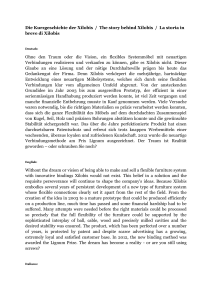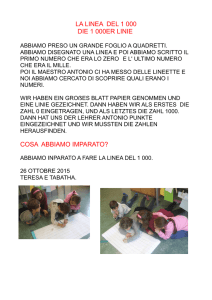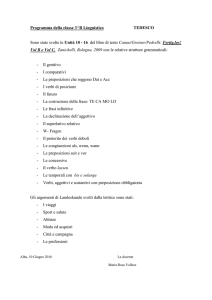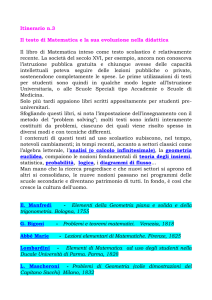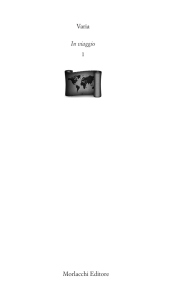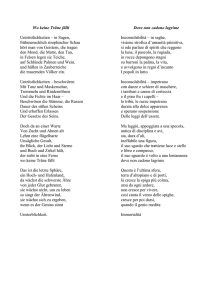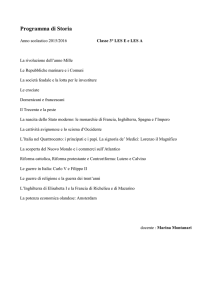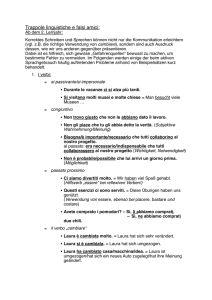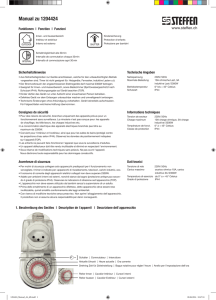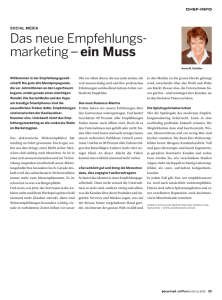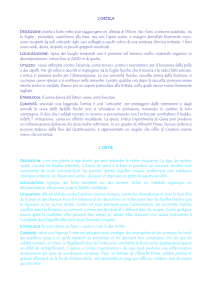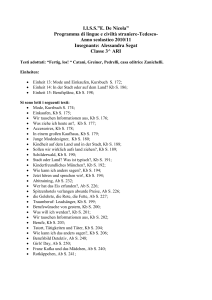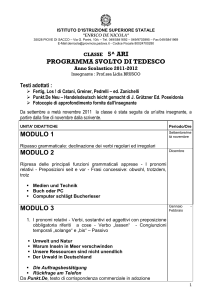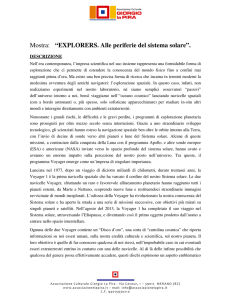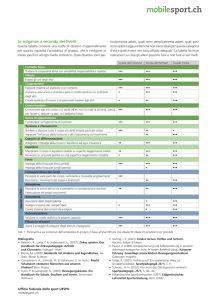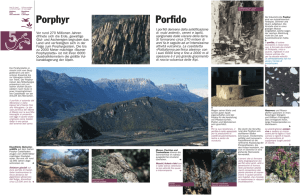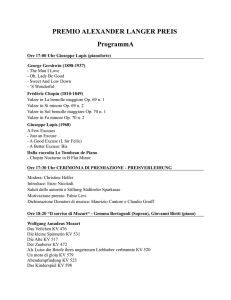MicroTest™ M4RT
annuncio pubblicitario
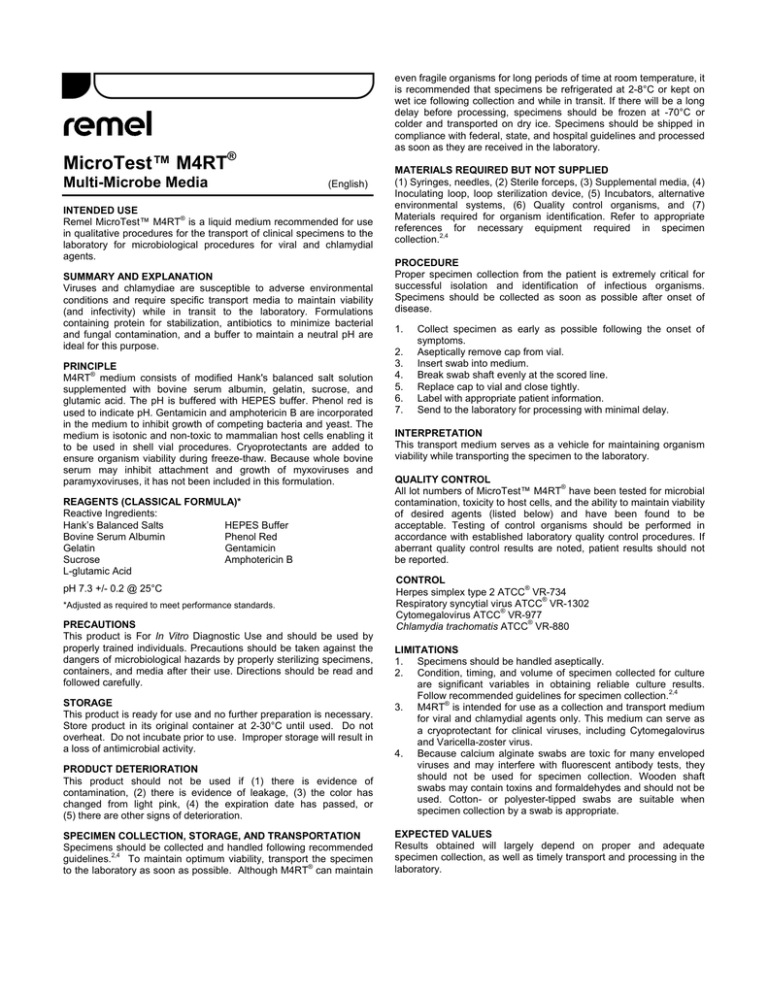
even fragile organisms for long periods of time at room temperature, it is recommended that specimens be refrigerated at 2-8°C or kept on wet ice following collection and while in transit. If there will be a long delay before processing, specimens should be frozen at -70°C or colder and transported on dry ice. Specimens should be shipped in compliance with federal, state, and hospital guidelines and processed as soon as they are received in the laboratory. MicroTest™ M4RT® Multi-Microbe Media (English) INTENDED USE ® Remel MicroTest™ M4RT is a liquid medium recommended for use in qualitative procedures for the transport of clinical specimens to the laboratory for microbiological procedures for viral and chlamydial agents. SUMMARY AND EXPLANATION Viruses and chlamydiae are susceptible to adverse environmental conditions and require specific transport media to maintain viability (and infectivity) while in transit to the laboratory. Formulations containing protein for stabilization, antibiotics to minimize bacterial and fungal contamination, and a buffer to maintain a neutral pH are ideal for this purpose. PRINCIPLE ® M4RT medium consists of modified Hank's balanced salt solution supplemented with bovine serum albumin, gelatin, sucrose, and glutamic acid. The pH is buffered with HEPES buffer. Phenol red is used to indicate pH. Gentamicin and amphotericin B are incorporated in the medium to inhibit growth of competing bacteria and yeast. The medium is isotonic and non-toxic to mammalian host cells enabling it to be used in shell vial procedures. Cryoprotectants are added to ensure organism viability during freeze-thaw. Because whole bovine serum may inhibit attachment and growth of myxoviruses and paramyxoviruses, it has not been included in this formulation. REAGENTS (CLASSICAL FORMULA)* Reactive Ingredients: Hank’s Balanced Salts HEPES Buffer Bovine Serum Albumin Phenol Red Gelatin Gentamicin Sucrose Amphotericin B L-glutamic Acid pH 7.3 +/- 0.2 @ 25°C *Adjusted as required to meet performance standards. PRECAUTIONS This product is For In Vitro Diagnostic Use and should be used by properly trained individuals. Precautions should be taken against the dangers of microbiological hazards by properly sterilizing specimens, containers, and media after their use. Directions should be read and followed carefully. MATERIALS REQUIRED BUT NOT SUPPLIED (1) Syringes, needles, (2) Sterile forceps, (3) Supplemental media, (4) Inoculating loop, loop sterilization device, (5) Incubators, alternative environmental systems, (6) Quality control organisms, and (7) Materials required for organism identification. Refer to appropriate references for necessary equipment required in specimen 2,4 collection. PROCEDURE Proper specimen collection from the patient is extremely critical for successful isolation and identification of infectious organisms. Specimens should be collected as soon as possible after onset of disease. 1. 2. 3. 4. 5. 6. 7. Collect specimen as early as possible following the onset of symptoms. Aseptically remove cap from vial. Insert swab into medium. Break swab shaft evenly at the scored line. Replace cap to vial and close tightly. Label with appropriate patient information. Send to the laboratory for processing with minimal delay. INTERPRETATION This transport medium serves as a vehicle for maintaining organism viability while transporting the specimen to the laboratory. QUALITY CONTROL ® All lot numbers of MicroTest™ M4RT have been tested for microbial contamination, toxicity to host cells, and the ability to maintain viability of desired agents (listed below) and have been found to be acceptable. Testing of control organisms should be performed in accordance with established laboratory quality control procedures. If aberrant quality control results are noted, patient results should not be reported. CONTROL ® Herpes simplex type 2 ATCC VR-734 ® Respiratory syncytial virus ATCC VR-1302 ® Cytomegalovirus ATCC VR-977 ® Chlamydia trachomatis ATCC VR-880 PRODUCT DETERIORATION This product should not be used if (1) there is evidence of contamination, (2) there is evidence of leakage, (3) the color has changed from light pink, (4) the expiration date has passed, or (5) there are other signs of deterioration. LIMITATIONS 1. Specimens should be handled aseptically. 2. Condition, timing, and volume of specimen collected for culture are significant variables in obtaining reliable culture results. 2,4 Follow recommended guidelines for specimen collection. ® 3. M4RT is intended for use as a collection and transport medium for viral and chlamydial agents only. This medium can serve as a cryoprotectant for clinical viruses, including Cytomegalovirus and Varicella-zoster virus. 4. Because calcium alginate swabs are toxic for many enveloped viruses and may interfere with fluorescent antibody tests, they should not be used for specimen collection. Wooden shaft swabs may contain toxins and formaldehydes and should not be used. Cotton- or polyester-tipped swabs are suitable when specimen collection by a swab is appropriate. SPECIMEN COLLECTION, STORAGE, AND TRANSPORTATION Specimens should be collected and handled following recommended 2,4 To maintain optimum viability, transport the specimen guidelines. ® to the laboratory as soon as possible. Although M4RT can maintain EXPECTED VALUES Results obtained will largely depend on proper and adequate specimen collection, as well as timely transport and processing in the laboratory. STORAGE This product is ready for use and no further preparation is necessary. Store product in its original container at 2-30°C until used. Do not overheat. Do not incubate prior to use. Improper storage will result in a loss of antimicrobial activity. PERFORMANCE CHARACTERISTICS ® Remel M4RT transport medium was compared to commercial and standard transport media routinely used for the transport and maintenance of viral and chlamydial agents. The results were equivalent or superior to the media in the comparison. The percentage of recovery for each agent at 2-8°C was as follows: ORGANISM 8 HOURS Respiratory Syncytial Virus 24 HOURS 79% 48 HOURS 65% 52% Herpes Simplex Type 1 McIntyre 84% 65% Cytomegalovirus (AD 169) 65% 38% Influenzae A H3N2 Shanghai 87 89% 72% 48% 35% Chlamydia trachomatis 80% BIBLIOGRAPHY 1. Koneman, E.W., S.D. Allen, W.M. Janda, P.C. Schreckenberger, and W.C. Winn, Jr. 1992. Color Atlas and Textbook of Diagnostic th Microbiology. 4 ed. J.B. Lippincott Co., Philadelphia, PA. 2. 3. Murray, P.R., E.J. Baron, J.H. Jorgensen, M.A. Pfaller, and R.H. th Yolken. 2003. Manual of Clinical Microbiology. 8 ed., Vol. 2. ASM, Washington, D.C. Mahoney, J.B. and M.A. Chernesky. J. Clin. Microbiol. 22:865-867. 5. Gleaves, C.A., R.L. Hodinka, S.L.G. Johnston, and E.M. Swierkosz. 1994. Cumitech 15A. Laboratory Diagnosis of Viral Infections. ASM, Washington, D.C. Forbes, B.A., D.F. Sahm, and A.S. Weissfeld. 2002. Bailey and th Scott’s Diagnostic Microbiology. 11 ed. Mosby, St. Louis, MO. REF Catalog Number IVD In Vitro Diagnostic Medical Device LAB For Laboratory Use Only Consult Instructions for Use (IFU) Moffett, M.B., J.L. Young, and R.D. Stuart. 1948. Br. Med. J. 2:421-424. 4. 6. Symbol Legend Temperature Limitation (Storage Temp.) LOT Batch Code (Lot Number) Use By (Expiration Date) EC REP European Authorized Representative M4RT® is a registered trademark of Remel Inc. MicroTest™ is a trademark of Remel Inc. ATCC® is a registered trademark of American Type Culture Collection. IFU 12505, Revised August 24, 2005 Printed in U.S.A. PACKAGING CONFIGURATIONS Polyester-Tipped Swabs Envelope w/ 2 plastic-shaft swabs (female) Envelope w/ 1 plastic-shaft swab Specimen *Zip-Seal Package and 1 stainless ID Card Bag Size steel-shaft swab (male and female) REF 15 ml Conical Centrifuge Tube 3 ml fill Glass Beads 12505 √ √ 12506 √ √ 12552 √ √ √ 12553 √ √ √ 12576 √ √ √ √ 12577 √ √ √ √ 12578 √ √ √ 12579 √ √ √ 72 12 √ √ √ √ 100 √ 100 √ 100 √ 100 √ 100 √ 100 * Zip-seal bag is intended for product packaging and not specimen transport. 12076 Santa Fe Drive, Lenexa, KS 66215, USA General Information: (800) 255-6730 Technical Service: (800) 447-3641 Order Entry: (800) 447-3635 Local/International Phone: (913) 888-0939 International Fax: (913) 895-4128 Website: www.remel.com Email: [email protected] de maintenir les échantillons entre 2 et 8°C ou de les placer sur de la glace liquide après le prélèvement et pendant le transport. Si un long délai est prévu avant le traitement, les échantillons doivent être congelés au minimum à -70°C et transportés sur de la glace sèche. Le transport doit être effectué conformément à la réglementation locale ou nationale et aux pratiques hospitalières en vigueur, et les échantillons doivent être traités dès leur arrivé au laboratoire. MicroTest™ M4RT® Moyens multi-microbes MATÉRIEL REQUIS NON FOURNI (Français) INDICATION MicroTest™ M4RT® de Remel est un moyen liquide recommandé pour l’usage dans des procédures qualitatives pour le transport de spécimens cliniques au laboratoire en vue de procédures microbiologiques portant sur les virus et les chlamydiae. RÉSUMÉ ET EXPLICATION Les virus et les chlamydiae sont sensibles aux conditions environnementales défavorables et ont besoin des moyens de transport spécifiques pour maintenir leur viabilité (et leur pouvoir infectant) lors du transfert vers le laboratoire. Les formules contenant des protéines pour la stabilisation, des antibiotiques pour limiter la contamination bactérienne et fongique, et un tampon pour assurer un pH neutre sont idéales à cet égard. PRINCIPE Le moyen M4RT® est une solution saline équilibrée de Hank (BSSH) modifiée additionnée de sérum-albumine bovin, de gélatine, de sucrose et d’acide glutamique. Le pH est tamponné à l’HEPES. Du rouge de phénol est utilisé pour indiquer le pH. De la gentamicine et de l’amphotéricine B sont incorporées au moyen pour empêcher la croissance des bactéries et levures concurrentes. Le moyen est isotonique et non toxique pour les cellules hôtes mammifères, permettant son utilisation dans les procédures de fioles cylindriques. Des cryoprotecteurs sont ajoutés pour assurer la viabilité de l’organisme pendant le cycle de congélation-décongélation. Étant donné que le sérum bovin entier risque d’empêcher l’attachement et la croissance des myxovirus et des paramyxovirus, il a été omis de cette formule. RÉACTIFS (FORMULE CLASSIQUE)* Ingrédients réactifs : solution saline équilibrée de Hank sérum-albumine bovin gélatine sucrose acide L-glutamique tampon HEPES rouge de phénol gentamicine amphotéricine B (1) Seringues, aiguilles, (2) pince stérile, (3) moyens supplémentaires, (4) boucle à inoculation, dispositif de stérilisation en boucle, (5) incubateurs, autres systèmes environnementaux, (6) organismes de contrôle de qualité et (7) éléments nécessaires pour l’identification des organismes. Consulter la documentation appropriée pour le détail des équipements requis pour le recueil d’échantillons.2,4 PROCÉDURE Le prélèvement approprié d’échantillons sur le patient est capital pour la réussite de l’isolation et de l’identification des organismes infectieux. Les prélèvements doivent être effectués le plus tôt possible après l’apparition de la maladie. 1. 2. 3. 4. 5. 6. 7. Prélever l’échantillon dès que possible après l’apparition des symptômes. Déboucher la fiole dans des conditions d’asepsie. Introduire un écouvillon dans le moyen. Briser la tige de l’écouvillon au niveau de la ligne de repère. Reboucher hermétiquement le flacon. Inscrire sur l’étiquette les informations appropriées concernant le patient. Envoyer au laboratoire pour traitement le plus vite possible. INTERPRÉTATION DU TEST Ce moyen de transport sert de véhicule pour maintenir la viabilité de l’organisme lors du transfert de l’échantillon au laboratoire. CONTRÔLE QUALITÉ Tous les numéros de lot de MicroTest™ M4RT® ont été évalués pour vérifier la contamination microbienne, la toxicité pour les cellules hôtes et la capacité à assurer la viabilité des agents désirés (liste ci-dessous) et se sont avérés acceptable. Les tests d’organismes de contrôle doivent satisfaire les critères établis pour les procédures de contrôle qualité en laboratoire. En cas de résultats de contrôle qualité aberrants, ne pas signalerles résultats obtenus . *Avec compensations éventuelles pour satisfaire les normes de performance. CONTRÔLE Herpès simplex type 2 ATCC® VR-734 Virus respiratoire syncytial ATCC® VR-1302 Cytomégalovirus ATCC® VR-977 Chlamydia trachomatis ATCC® VR-880 PRÉCAUTIONS LIMITATIONS Ce produit exclusivement destiné à un usage diagnostique in vitro ne doit être utilisé que par des personnes dûment formées. Toutes les précautions contre les risques microbiologiques doivent être prises et il est indispensable de bien stériliser les prélèvements, les récipients et les moyens après usage. Toutes les instructions doivent être lues et suivies soigneusement . 1. STOCKAGE 3. pH 7,3 +/- 0,2 à 25 °C Le produit est prêt à l’emploi et aucune préparation supplémentaire n’est nécessaire. Il doit être stocké dans son flacon d’origine et conservé à une température comprise entre 2 et 30 °C jusqu’à son utilisation. Ne pas surchauffer. Ne pas incuber avant utilisation. Des conditions de stockage inexacte entraînent une perte d’activité antimicrobienne. DÉTÉRIORATION DU PRODUIT Ce produit ne doit pas être utilisé si (1) une preuve de contamination existe, (2) une preuve de fuite existe, (3) la couleur n’est plus rose pâle, (4) la date de péremption est dépassée ou (5) d’autres signes de détérioration sont présents. 2. 4. Les échantillons doivent être manipulés dans des conditions d’asepsie. L’état et le volume de l’échantillon prélevé pour culture, ainsi que le minutage de l’opération, sont des variables clés pour parvenir à des résultats fiables. Suivez les directives recommandées pour la collection de spécimen .2,4 M4RT® ne doit être utilisé comme moyen de collection et de transport que pour les virus et les chlamydiae. Ce moyen peut servir de cryoprotecteur pour les virus cliniques, notamment les cytomégalovirus et les virus de la varicelle-zona. Comme les écouvillons recouverts d’alginate de calcium sont toxiques pour un grand nombre de virus enveloppés et risquent d’intervenir avec les recherches d’anticorps par immunofluorescence, ils ne doivent pas être utilisés pour effectuer des collections de spécimens. Les écouvillons à tige en bois contiennent parfois des toxines et du formaldéhyde et ne doivent pas être utilisés. Les écouvillons à embout coton ou Polyester peuvent être employés quand la collection de spécimen par un écouvillon est appropriée. RECUEIL, STOCKAGE ET TRANSPORT DE PRÉLÈVEMENTS Les prélèvements doivent être recueillis et manipulés après les directives recommandées.2,4 Pour conserver une viabilité optimale, ils doivent être transportés au laboratoire le plus tôt possible. Bien que le moyen M4RT® peut même maintenir la conservation des organismes fragiles à température ambiante pendant des périodes prolongées, il est préférable VALEURS ATTENDUES Les résultats obtenus dépendent en grande partie de la qualité de la procédure de prélèvement et de l’absence de délai au cours du transport et lors du traitement au laboratoire. CARACTÉRISTIQUES DE PERFORMANCE Le moyen de transport M4RT® de Remel a été comparé à d’autres moyens standard et disponibles dans le commerce couramment utilisés pour le transport et la conservation du virus et de chlamydiae. Les résultats ont été équivalents ou supérieurs à ceux des moyens comparés. Les pourcentages de récupération pour chaque agent conservé entre 2 et 8°C ont été les suivants : ORGANISME Virus respiratoire syncytial 8 HEURES 24 HEURES 48 HEURES 79 % 65 % 52 % 84 % 65 % Herpès simplex type 1 McIntyre Cytomégalovirus (AD 169) 65 % 38 % Influenzae A H3N2 Shanghai 87 89 % 72 % 48 % 35 % Chlamydia trachomatis 80 % Légende des symboles BIBLIOGRAPHIE 1. 2. Koneman, E.W., S.D. Allen, W.M. Janda, P.C. Schreckenberger, and W.C. Winn, Jr. 1992. Color Atlas and Textbook of Diagnostic Microbiology. 4th ed. J.B. Lippincott Co., Philadelphia, PA. Murray, P.R., E.J. Baron, J.H. Jorgensen, M.A. Pfaller, and R.H. Yolken. 2003. Manual of Clinical Microbiology. 8th ed., Vol. 2. ASM, Washington, D.C. 3. Moffett, M.B., J.L. Young, and R.D. Stuart. 1948. Br. Med. J. 2:421424. 4. Mahoney, J.B. and M.A. Chernesky. J. Clin. Microbiol. 22:865-867. 5. Gleaves, C.A., R.L. Hodinka, S.L.G. Johnston, and E.M. Swierkosz. 1994. Cumitech 15A. Laboratory Diagnosis of Viral Infections. ASM, Washington, D.C. 6. Forbes, B.A., D.F. Sahm, and A.S. Weissfeld. 2002. Bailey and Scott’s Diagnostic Microbiology. 11th ed. Mosby, St. Louis, MO. REF Numéro de référence IVD Dispositif médical de diagnostic in vitro LAB Pour l ‘usage de laboratoire Lire les instructions avant utilisation (IFU = mode d’emploi) Limites de température (stockage) LOT Code de lot (numéro) À utiliser avant le (date de péremption) EC REP Représentant autorisé pour l'UE M4RT® est une marque déposée de Remel Inc. MicroTest™ est une marque de commerce de Remel Inc. ® ATCC est une marque déposée d’American Type Culture Collection. IFU 12505, révisé le 2005-08-24 Imprimé aux États-Unis CONFIGURATIONS DE CONDITIONNEMENT Écouvillons à bout Polyester RÉF. Tube conique centrifuge 15 ml remplissage 3 ml Enveloppe avec 2 écouvillons tige plastique (femelle) Billes de verre Enveloppe avec 1 écouvillon tige plastique et 1 écouvillon tige inox (mâle et femelle) 12505 √ √ 72 12506 √ √ 12 12552 √ √ √ 12553 √ √ √ 12576 √ √ √ √ 12577 √ √ √ √ 12578 √ √ √ 12579 √ √ √ Carte ID échant. √ √ √ * Sac à Contenu fermeture éclair √ 100 √ 100 √ 100 √ 100 √ 100 √ 100 *Sac à fermeture éclair prévu pour l'empaquetage de produit et pas le transport de spécimen. 12076 Santa Fe Drive, Lenexa, KS 66215, États-Unis Renseignements : (800) 255-6730 Service technique : (800) 447-3641 Service commercial : (800) 447-3635 (États-Unis) Téléphone (international) : +1 (913) 888-0939 Télécopie (international) : +1 (913) 895-4128 Site Web : www.remel.com E-mail : [email protected] Raumtemperatur im Transportmedium M4RT® aufbewahrt werden, es wird jedoch empfohlen, die Proben nach der Probenentnahme und während des Transports bei 2-8 °C gekühlt oder im Eisbad aufzubewahren. Wenn die Proben erst nach einem längeren Zeitraum bearbeitet werden können, sollten Sie bei mindestens -70 °C eingefroren und auf Trockeneis transportiert werden. Die Proben sollten unter Beachtung der staatlichen und klinikinternen Richtlinien transportiert und nach dem Eintreffen im Labor umgehend bearbeitet werden. MicroTest™ M4RT® Multimikrobenmedium (Deutsch) BENÖTIGTE MATERIALIEN (NICHT IM LIEFERUMFANG ENTHALTEN) MicroTest™ M4RT® von Remel ist ein flüssiges Medium, das bei qualitativen Verfahren zum Transport klinischer Proben ins Labor empfohlen wird, wo die Proben mikrobiologischen Tests auf Viren und Chlamydien unterzogen werden sollen. (1) Spritzen, Nadeln, (2) sterile Pinzette, (3) zusätzlichen Medien, (4) Inokulationsschlinge, Sterilisationsgerät für Inokulationsschlingen, (5) Inkubatoren, andere Klimasysteme, (6) Kontrollorganismen und (7) Materialien zur Organismusbestimmung. Weitere Informationen zu Ausrüstungsgegenständen, die zur Probenentnahme erforderlich sind, finden Sie in den entsprechenden Literaturverweisen.2,4 ZUSAMMENFASSENDE ERKLÄRUNG TESTVERFAHREN Viren und Chlamydien reagieren empfindlich auf widrige Umgebungsbedingungen und benötigen daher ein spezielles Transportmedium, um ihre Lebensfähigkeit (und Infektiosität) auf dem Weg zum Labor zu erhalten. Rezepturen, die stabilisierende Proteine, antibakterielle und fungizide Antibiotika sowie einen Puffer zum Erhalten der pH-Neutralität enthalten, sind zu diesem Zweck daher ideal geeignet. Die Probenentnahme vom Patienten ist für eine erfolgreiche Isolierung und Identifizierung infektiöser Organismen von entscheidender Bedeutung. Die Proben sollten möglichst umgehend nach dem Einsetzen der Erkrankung entnommen werden. INDIKATION TESTPRINZIP Das M4RT®-Medium besteht aus modifizierter, gepufferter Salzlösung nach Hank, angereichert mit Rinder-Serumalbumin, Gelatine, Sacharose und L-Glutaminsäure. Die Lösung ist mit HEPES-Puffer gepuffert. Als Indikator dient Phenolrot. Gentamicin und Amphotericin B sind im Medium enthalten, um das Wachstum kompetitiver Bakterien oder Hefe zu hemmen. Das Medium ist isotonisch und gegenüber Säugetierwirtszellen nicht toxisch, so dass es für sog. „Shell-VialVerfahren“ eingesetzt werden kann. Kryoprotektiva sind enthalten, um die Lebensfähigkeit der Organismen beim wiederholten Auftauen zu erhalten. Da ganzhaltiges Rinderserum die Adhäsion und das Wachstum von Myxoviren und Paramyxoviren unterdrücken kann, ist es in dieser Rezeptur nicht enthalten. REAGENZIEN (KLASSISCHE REZEPTUR)* Reaktive Inhaltsstoffe: Gepufferte Salzlösung nach Hank Rinder-Serumalbumin Gelatine Sacharose L-Glutaminsäure HEPES-Puffer Phenolrot Gentamicin Amphotericin B 1. 2. 3. 4. 5. 6. 7. Proben möglichst sofort nach dem Auftreten der Symptome nehmen. Den Verschluss aseptisch vom Fläschchen entfernen. Abstrichbesteck in das Medium geben. Den Stiel an der eingekerbten Linie gleichmäßig abbrechen. Den Verschluss auf das Fläschchen setzen und fest verschließen. Das Fläschchen mit den Patientendaten versehen. Die Proben möglichst umgehend ins Labor senden. AUSWERTUNG DES TESTS Dieses Transportmedium dient dazu, die Lebensfähigkeit des Organismus beim Transport der Probe ins Labor aufrechtzuerhalten. QUALITÄTSKONTROLLE Alle Chargen von MicroTest™ M4RT® wurden auf mikrobielle Kontamination, Toxizität gegenüber den Zellen des Wirtsorganismus und Erhaltung der Lebensfähigkeit gewünschter Agenzien geprüft und als tauglich befunden. Die im Rahmen der Qualitätssicherung durchgeführten Tests mit Kontrollorganismen sollten die Anforderungen anerkannter Qualitätssicherungsverfahren für Labore erfüllen. Treten im Rahmen der Qualitätssicherung abweichende Ergebnisse auf, sollten die Ergebnisse des Patienten nicht verwertet werden. *Angepasst, um die Anforderungen erforderlicher Leistungsstandards zu erfüllen. KONTROLLE Herpes Simplex Typ II, ATCC® VR-734 Respiratory syncytial virus (RSV), ATCC® VR-1302 Zytomegalie-Virus, ATCC® VR-977 Chlamydia trachomatis, ATCC® VR-880 VORSICHTSMASSNAHMEN EINSCHRÄNKUNGEN pH 7,3 +/- 0,2 bei 25 °C Dieses Produkt ist zur In-vitro-Diagnostik vorgesehen und sollte von entsprechend geschulten Personen eingesetzt werden. Mikrobiologischen Gefahren sollte vorgebeugt werden, indem Proben, Behälter und Medien nach dem Gebrauch sterilisiert werden. Die gegebenen Anweisungen sollten aufmerksam gelesen und genau befolgt werden. LAGERUNG Dieses Produkt ist ohne weitere Vorbereitung gebrauchsfertig. Es sollte in seinem Originalbehälter bei 2-30°C bis zum Gebrauch aufbewahrt werden. Nicht überhitzen. Vor dem Gebrauch nicht bebrüten. Eine unsachgemäße Aufbewahrung führt zum Verlust der antimikrobiellen Aktivität. BEEINTRÄCHTIGUNG DER PRODUKTQUALITÄT Das Produkt sollte nicht verwendet werden, wenn (1) Anzeichen auf eine Kontamination vorliegen, (2) Anzeichen auf eine Undichtigkeit vorliegen, (3) sich die Farbe von hellrosa geändert hat, (4) das Verfallsdatum überschritten wurde oder (5) Anzeichen auf Zersetzungsvorgänge vorliegen. PROBENENTNAHME, LAGERUNG UND TRANSPORT Die Probenentnahme und -handhabung sollten gemäß den folgenden Empfehlungen erfolgen.2,4 Um optimale Lebensfähigkeit zu gewährleisten, sollten die Proben umgehend ins Labor gebracht werden. Zwar können selbst empfindliche Organismen über längere Zeit bei 1. 2. 3. 4. Die Proben sollten unter aseptischen Bedingungen bearbeitet werden. Die Bedingungen, der zeitliche Verlauf und das Volumen der zum Züchten von Kulturen genommenen Probe haben einen entscheidenden Einfluss auf die Ergebnisse der Kulturuntersuchung. Empfohlene Richtlinien zur Probenentnahme befolgen.2,4 M4RT® ist ausschließlich als Proben- und Transportmedium für Virus- und Mykoplasma-Agenzien vorgesehen. Dieses Medium kann für klinische Viren wie Zytomegalie-Viren und Varicella-Zoster-Viren als Kryoprotektivum eingesetzt werden. Da Kalziumalginat-Tupfer für viele lipidhaltige Viren toxisch sind und die Fluoreszenz-Tests auf Antikörper beeinträchtigen können, sollten sie bei der Probenentnahme nicht verwendet werden. Tupfer mit Holzstielen können Toxine und Formaldehyd enthalten und sollten daher nicht verwendet werden. Watte- oder PolyesterAbstrichtupfer können verwendet werden, sofern die Probenentnahme mit Abstrichtupfer geeignet ist. ZU ERWARTENDE WERTE Die erzielten Ergebnisse hängen entscheidend davon ab, ob die Probenentnahme richtig und auf geeignete Weise durchgeführt wurde und ob die Proben ohne Verzögerung ins Labor transportiert und dort sofort bearbeitet wurden. LEISTUNGSMERKMALE Das Transportmedium M4RT® von Remel wurde mit marktüblichen und Standardtransportmedien verglichen, die routinemäßig für den Transport von Virus- und Chlamydia-Agenzien verwendet werden. Die damit erzielten Ergebnisse waren vergleichbar oder besser. Bei 2-8 °C wurden für die verschiedenen Agenzien die folgenden prozentualen Wiederherstellungsraten erzielt: ORGANISMUS Respiratory Syncytial Virus (RSV) 8 STUNDEN 24 STUNDEN 48 STUNDEN 79 % 65 % 52 % Herpes Simplex, Typ I, MyIntyre 84 % 65 % Zytomegalie-Virus (AD 169) 65 % 38 % Influenza A H3N2, Shanghai 87 89 % 72 % 48 % 35 % Chlamydia trachomatis 80 % Symbollegende LITERATURVERWEISE 1. Koneman, E.W., S.D. Allen, W.M. Janda, P.C. Schreckenberger, and W.C. Winn, Jr. 1992. Color Atlas and Textbook of Diagnostic Microbiology. 4th ed. J.B. Lippincott Co., Philadelphia, PA. 2. Murray, P.R., E.J. Baron, J.H. Jorgensen, M.A. Pfaller, and R.H. Yolken. 2003. Manual of Clinical Microbiology. 8th ed., Vol. 2. ASM, Washington, D.C. 3. Moffett, M.B., J.L. Young, and R.D. Stuart. 1948. Br. Med. J. 2:421424. 4. Mahoney, J.B. and M.A. Chernesky. J. Clin. Microbiol. 22:865-867. 5. Gleaves, C.A., R.L. Hodinka, S.L.G. Johnston, and E.M. Swierkosz. 1994. Cumitech 15A. Laboratory Diagnosis of Viral Infections. ASM, Washington, D.C. 6. Forbes, B.A., D.F. Sahm, and A.S. Weissfeld. 2002. Bailey and Scott’s Diagnostic Microbiology. 11th ed. Mosby, St. Louis, MO. REF Katalognummer IVD In-vitro-Diagnostikum LAB Für Laborgebrauch Gebrauchsanweisung lesen Temperaturgrenzen (Lagertemperatur) LOT Chargencode (Lotnummer) Verwendbar bis (Verfallsdatum) EC REP Autorisierte Vertretung für U-Länder M4RT® ist ein eingetragenes Warenzeichen von Remel Inc. MicroTest™ ist ein Warenzeichen von Remel Inc. ATCC® ist ein eingetragenes Warenzeichen von American Type Culture Collection. IFU 12505, überarbeitet am 2005-08-24 Gedruckt in den USA PACKUNGSINHALT Polyester-Abstrichbesteck Beutel mit 2 Abstrichtupfern mit Glasperlen Kunststoffstiel (weiblich) Beutel mit je 1 Abstrichtupfer mit Kunststoffstiel und Edelstahlstiel (männlich und weiblich) REF Zentrifugenröhrchen, konisch 15 ml 3 ml Füllung 12505 √ √ 12506 √ √ 12552 √ √ √ 12553 √ √ √ 12576 √ √ √ √ 12577 √ √ √ √ 12578 √ √ √ 12579 √ √ √ Proben- *Verschließbarer Packungsgröße ID Beutel 72 12 √ √ √ √ 100 √ 100 √ 100 √ 100 √ 100 √ 100 * Verschließbarer Beutel ist für das Produktverpacken und nicht Probestücktransport bestimmt. 12076 Santa Fe Drive, Lenexa, KS 66215, USA Allgemeine Auskünfte: (800) 255-6730 Technische Unterstützung: (800) 447-3641 Bestellungen: (800) 447-3635 Telefon lokal/international: (913) 888-0939 Fax international: (913) 895-4128 Website: www.remel.com E-Mail: [email protected] mantenere una vitalità ottimale. Per quanto l’M4RT® possa mantenere microrganismi fragili per lunghi periodi di tempo a temperatura ambiente, si raccomanda di refrigerare i campioni a 2-8°C o tenerli in ghiaccio dopo la raccolta e durante il trasporto. In caso di lungo periodo di ritardo prima del trattamento, i campioni devono essere congelati a –70°C o ad una temperatura inferiore e trasportati con ghiaccio secco. I campioni devono essere inviati in conformità con le norme federali, statali ed ospedaliere e sottoposti ad analisi appena giunti in laboratorio. MicroTest™ M4RT® Terreni multi-microbici MATERIALE NECESSARIO MA NON FORNITO (Italiano) MicroTest™ M4RT® di Remel è un terreno liquido raccomandato per l’uso in procedure qualitative per il trasporto di campioni clinici al laboratorio per procedure microbiologiche di agenti virali e clamidiali. (1) Siringhe, aghi, (2) pinze sterili, (3) terreni di coltura supplementari, (4) ansa per inoculo, dispositivo di sterilizzazione per ansa, (5) termostati o sistemi per la formazione di atmosfere modificate, (6) microrganismi per il controllo qualità e (7) materiali richiesti per l’identificazione dei microrganismi. Consultare i riferimenti adeguati per le apparecchiature necessarie per la raccolta dei campioni.2,4 DESCRIZIONE DEL PRODOTTO PROCEDIMENTO I virus, le clamidie e i micoplasmi sono sensibili a condizioni ambientali avverse e necessitano di un terreno di trasporto specifico per mantenere la vitalità (e l’infettività) durante il trasporto al laboratorio. A tale scopo sono particolarmente adatte le formule che contengono la proteina per la stabilizzazione, antibiotici per ridurre al minimo la contaminazione batterica e da funghi e un sistema tampone per mantenere un pH neutro. Il prelievo dei campioni dal paziente nelle modalità adeguate è estremamente importante per il corretto isolamento e l’identificazione dei microrganismi infettivi. I campioni devono essere prelevati il più presto possibile dopo l’inizio della malattia. USO PREVISTO PRINCIPIO Il terreno M4RT® è costituito da una soluzione salina bilanciata di Hank modificata, addizionata con albumina di siero di bovino, gelatina, saccarosio e acido glutamico. Il valore pH è attenuato dal sistema tampone HEPES. Per indicare il pH si usa il fenolo rosso. Nel terreno sono contenute gentamicina e anfotericina B per inibire la crescita di batteri e lieviti in competizione. Il terreno è isotonico e atossico per le cellule ospiti proprie dei mammiferi, caratteristiche che ne consentono l'utilizzo in procedure di coltura rapida (shell vial). Vengono aggiunti crioprotettori per garantire la vitalità del microrganismo durante il congelamento-decongelamento. Il siero di bovino intero non è stato incluso in questa formula in quanto può inibire l’attacco e la crescita di mixovirus e paramixovirus. REAGENTI (FORMULA CLASSICA)* Principi del test: Sali bilanciati di Hank Albumina di siero di bovino Gelatina Saccarosio Acido L-glutamico Sistema tampone HEPES Fenolo rosso Gentamicina Anfotericina B 1. 2. 3. 4. 5. 6. 7. Prelevare i campioni quanto prima possibile dopo la comparsa dei sintomi. Rimuovere il tappo dalla fiala adottando una tecnica sterile. Inserire il tampone nel terreno. Rompere lo stelo del tampone in corrispondenza della linea tratteggiata. Riporre il tappo sulla fiala e chiudere ermeticamente. Applicare l’etichetta con le corrette informazioni del paziente. Inviare al laboratorio per l'analisi con il minor ritardo possibile. INTERPRETAZIONE DEL TEST Questo terreno di trasporto funge da veicolo per il mantenimento della vitalità dei microrganismi durante il trasporto del campione al laboratorio. CONTROLLO QUALITÀ Tutti i numeri di lotto di MicroTest™ M4RT® sono stati sottoposti al test per verificarne la contaminazione microbica, la tossicità delle cellule ospiti e la capacità a mantenere la vitalità degli agenti desiderati (elencati qui sotto) e si sono dimostrati accettabili. I test di controllo qualità devono essere eseguiti in conformità con le procedure di controllo qualità definite dal laboratorio. Se i test di controllo qualità forniscono risultati aberranti, i risultati ottenuti con i campioni in esame non devono essere refertati. CONTROLLO Herpes simplex tipo 2 ATCC® VR-734 Virus sinciziale delle vie respiratorie ATCC® VR-1302 Citomegalovirus ATCC® VR-977 Chlamydia trachomatis ATCC® VR-880 pH 7,3 +/- 0,2 a 25 °C *La formulazione è regolata in base ai criteri di esecuzione richiesti. PRECAUZIONI Il prodotto è indicato esclusivamente per uso diagnostico in vitro e deve essere utilizzato solo da personale competente ed esperto. Si raccomanda di adottare le dovute precauzioni contro eventuali rischi microbiologici sterilizzando opportunamente dopo l'uso campioni, contenitori e strumenti. Leggere con attenzione le istruzioni contenute in questo documento e attenervisi scrupolosamente. LIMITAZIONI CONDIZIONI DI CONSERVAZIONE 3. Questo prodotto è pronto per l’uso e non necessita di ulteriore preparazione. Il prodotto deve essere conservato nel suo contenitore originale ad una temperatura di 2-30 °C fino al momento dell’utilizzo. Non surriscaldare. Non incubare prima dell’uso. Una conservazione inadeguata causerà una perdita di attività antimicrobica. DETERIORAMENTO DEL PRODOTTO Questo prodotto non deve essere utilizzato se (1) è presente una contaminazione, (2) si notano perdite, (3) si è verificata una variazione del colore rispetto al rosa chiaro originale, (4) la data di scadenza è stata superata oppure (5) presenta segni di deterioramento. 1. 2. 4. Trattare i campioni adottando una tecnica atta a garantire l'asepsi. La condizione, la tempestività e il volume del campione prelevato per la coltura sono variabili significative per ottenere risultati di coltura affidabili. Seguire le linee guida raccomandate per la raccolta dei campioni.2,4 L’M4RT® viene utilizzato come terreno di raccolta e di trasporto solo per agenti virali e clamidiali. Questo terreno può essere utilizzato come crioprotettore per virus clinici, compreso il Citomegalovirus e il virus Varicella-zoster. Poiché i tamponi di alginato di calcio sono tossici per numerosi virus inviluppati e possono interferire con i test degli anticorpi fluorescenti, non dovranno essere usati per la raccolta dei campioni. I tamponi con stelo di legno possono contenere tossine e formaldeide e non devono essere usati. Quando la raccolta dei campioni deve essere effettuata con un tampone, è opportuno usare tamponi con punta di cotone idrofilo o poliestere. VALORI ATTESI RACCOLTA, CONSERVAZIONE E TRASPORTO DEI CAMPIONI 2,4 Prelevare e trattare i campioni seguendo le linee guida raccomandate. Trasportare il campione al laboratorio il più presto possibile per I risultati ottenuti dipenderanno in gran parte dalla raccolta corretta ed adeguata dei campioni nonché dalla tempestività con cui vengono trasportati in laboratorio ed analizzati. CARATTERISTICHE DI ESECUZIONE Il terreno di trasporto M4RT® di Remel è stato paragonato ai terreni di trasporto standard e commerciali usati per il trasporto e il mantenimento di agenti virali e clamidiali. I risultati ottenuti si sono dimostrati equivalenti o superiori ai terreni usati per il . La percentuale di recupero per ogni agente a 2-8 °C è indicata qui di seguito. MICRORGANISMO Virus sinciziale delle vie respiratorie 8 ORE 24 ORE 48 ORE 79% 65% 52% 84% 65% Herpes Simplex Tipo 1 McIntyre Citomegalovirus (AD 169) 65% 38% Influenzae A H3N2 Shanghai 87 89% 72% 48% 35% Chlamydia trachomatis 80% Spiegazioni dei simboli BIBLIOGRAFIA 1. 2. Koneman, E.W., S.D. Allen, W.M. Janda, P.C. Schreckenberger, and W.C. Winn, Jr. 1992. Color Atlas and Textbook of Diagnostic Microbiology. 4th ed. J.B. Lippincott Co., Philadelphia, PA. Murray, P.R., E.J. Baron, J.H. Jorgensen, M.A. Pfaller, and R.H. Yolken. 2003. Manual of Clinical Microbiology. 8th ed., Vol. 2. ASM, Washington, D.C. 3. Moffett, M.B., J.L. Young, and R.D. Stuart. 1948. Br. Med. J. 2:421424. 4. Mahoney, J.B. and M.A. Chernesky. J. Clin. Microbiol. 22:865-867. 5. Gleaves, C.A., R.L. Hodinka, S.L.G. Johnston, and E.M. Swierkosz. 1994. Cumitech 15A. Laboratory Diagnosis of Viral Infections. ASM, Washington, D.C. 6. Forbes, B.A., D.F. Sahm, and A.S. Weissfeld. 2002. Bailey and Scott’s Diagnostic Microbiology. 11th ed. Mosby, St. Louis, MO. REF Codice numero IVD Dispositivo per uso diagnostico in vitro LAB Per uso del laboratorio Consultare le istruzioni per l'uso (IFU) Limitazioni per temperatura (Temp. di conservazione) LOT Codice lotto (Numero Lotto) Da utilizzare entro (data di scadenza) Rappresentante autorizzato per EC REP l'Europa M4RT® è un marchio registrato di Remel Inc. MicroTest™ è un marchio di fabbrica di Remel Inc. ATCC® è un marchio registrato di American Type Culture Collection. IFU 12505, data ultima revisione: 2005-08-24 Stampato negli U.S.A. CONFIGURAZIONI DI CONFEZIONAMENTO Poliestere-Tipped SwabsTamponi con punta in poliestere REF Busta con 2 Busta con 1 tampone con stelo Provetta conica per Perline di tamponi (femmina) in plastica e 1 tampone con centrifuga da 15 ml vetro con stelo in stelo in acciaio inox riempimento 3 ml plastica (maschio e femmina) 12505 √ √ 12506 √ √ 12552 √ √ √ 12553 √ √ √ 12576 √ √ √ √ 12577 √ √ √ √ 12578 √ √ √ 12579 √ √ √ Scheda di identificazione del campione * Sacchetto con chiusura ermetica Dimensioni confezione 72 12 √ √ √ √ 100 √ 100 √ 100 √ 100 √ 100 √ 100 * Sacchetto con chiusura ermetica è inteso per l'imballaggio del prodotto e non il trasporto dell'esemplare. 12076 Santa Fe Drive, Lenexa, KS 66215, USA Informazioni generali: (800) 255-6730 Assistenza tecnica: (800) 447-3641 Ufficio vendite: (800) 447-3635 Tel. locali/internazionali: (913) 888-0939 Fax internazionale: (913) 895-4128 Sito Web: www.remel.com E-mail: [email protected] de tiempo prolongados a temperatura ambiente, se recomienda refrigerar las muestras a una temperatura de 2 a 8°C o mantenerlas en hielo después de su obtención y durante el transporte. Si se va a retrasar mucho el procesado, las muestras se deben enfriar a –70°C o menos y el transporte se hará en hielo seco. Las muestras se deben enviar según las normas federales, estatales y hospitalarias y se procesarán en cuanto sea posible tras su llegada al laboratorio. MicroTest™ M4RT® Medio multimicrobiano MATERIALES NECESARIOS PERO NO SUMINISTRADOS (Español) USO PREVISTO MicroTest™ M4RT® de Remel es un medio líquido cuyo uso se recomienda en los procedimientos cualitativos, para el transporte de muestras clínicas hacia el laboratorio, en los procedimientos microbiológicos de virus y clamidias. RESUMEN Y EXPLICACIÓN Los virus y las clamidias son sensibles a las condiciones ambientales adversas y requieren un medio de transporte específico para mantener su viabilidad (e infectividad) durante su traslado al laboratorio. Con tal fin, son ideales las formulaciones que contienen proteínas para la estabilización, antibióticos para minimizar la contaminación bacteriana y micótica, y un tampón para mantener un pH neutro. PRINCIPIO El medio M4RT® consiste en una solución salina equilibrada de Hank modificada, complementada con albúmina sérica bovina, gelatina, sacarosa y ácido glutámico. El pH se equilibra con tampón HEPES. Como indicador de pH se usa rojo fenol. Para inhibir el crecimiento de bacterias y levaduras competidoras se añaden al medio gentamicina y anfotericina B. El medio es isotónico y no tóxico para las células huésped de mamífero, lo que permite su uso en procedimientos de centrifugación y cultivo celular para el diagnóstico precoz (shell vial assay). Se añaden crioprotectores para garantizar la viabilidad del organismo durante el proceso de congelación y descongelación. No se ha incluido suero bovino completo en esta formulación porque puede inhibir la adhesión y crecimiento de mixovirus y paramixovirus. REACTIVOS (FÓRMULA CLÁSICA)* Ingredientes de los reactivos: Salino de Hank equilibrado Albúmina sérica bovina Gelatina Sacarosa Ácido L-glutámico Tampón HEPES Rojo fenol Gentamicina Anfotericina B pH 7,3 +/- 0,2 a 25 °C *Ajustado según necesidades para cumplir los estándares de funcionamiento. PRECAUCIONES Este producto sólo es para uso diagnóstico in vitro y debe ser utilizado por personal con la formación adecuada. Se tomarán precauciones frente a los riesgos microbiológicos, esterilizando correctamente las muestras, envases y medios después de su uso. Se deben leer y seguir atentamente las instrucciones. ALMACENAMIENTO Este producto se presenta listo para su uso y no requiere más preparación. Se debe almacenar en su envase original a una temperatura de 2 a 30 °C hasta el momento de su uso. No calentar en exceso. No incubar antes de su uso. El almacenamiento inadecuado provocará la pérdida de actividad antimicrobiana. DETERIORO DEL PRODUCTO Este producto no se debe usar si: 1) hay signos de contaminación; 2) hay signos de fugas; 3) el color ha cambiado y no es rosa claro; 4) se ha sobrepasado la fecha de caducidad, o 5) hay otros signos de deterioro. OBTENCIÓN, ALMACENAMIENTO Y TRANSPORTE DE LAS MUESTRAS Las muestras se deben obtener y manipular siguiendo las normas recomendadas.2,4 Para mantener la viabilidad óptima, transportar la muestra al laboratorio en cuanto sea posible. Aunque el medio M4RT® puede mantener incluso los microorganismos frágiles durante periodos (1) Jeringuillas, agujas; (2) pinzas estériles; (3) medio suplementario; (4) asa de inoculación, dispositivo de esterilización en asa; (5) incubadoras, sistemas ambientales alternativos; (6) microorganismos para el control de calidad, y (7) los materiales necesarios la identificación del microorganismo. Consultar el equipo necesario para la obtención de la muestra en las referencias apropiadas.2,4 PROCEDIMIENTO La obtención adecuada de la muestra del paciente es fundamental para el éxito del aislamiento y la identificación de los microorganismos infecciosos. Las muestras se deben obtener lo antes posible después del inicio de la enfermedad. 1. 2. 3. 4. 5. 6. 7. Obtener la muestra en cuanto sea posible tras el inicio de los síntomas. Extraer el tapón del vial en condiciones asépticas. Insertar la torunda en el medio. Romper limpiamente el mango de la torunda por la línea ranurada. Volver a poner el tapón en el vial y cerrarlo bien. Etiquetar con la información adecuada del paciente. Enviar al laboratorio para su procesamiento con el menor retraso posible. INTERPRETACIÓN DE LOS RESULTADOS Este medio de transporte sirve como vehículo para mantener la viabilidad del microorganismo durante el transporte de la muestra al laboratorio. CONTROL DE CALIDAD En todos los lotes de MicroTest™ M4RT® se ha estudiado la contaminación microbiológica, la toxicidad de las células huésped y la capacidad para mantener la viabilidad de los microorganismos deseados (ver la lista a continuación), y el resultado obtenido ha sido aceptable. El estudio de los microorganismos de control se debe realizar de acuerdo con los procedimientos de control de calidad establecidos en el laboratorio. Si se observan resultados anómalos en el control de calidad, no se informará de los resultados de ese paciente. CONTROL Herpes simplex tipo 2 ATCC® VR-734 Virus sincitial respiratorio ATCC® VR-1302 Citomegalovirus ATCC® VR-977 Chlamydia trachomatis ATCC® VR-880 LIMITACIONES 1. 2. 3. 4. Manejar las muestras en condiciones asépticas. La situación, el momento y el volumen de las muestras obtenidas para cultivo son variables significativas para obtener resultados fiables del cultivo. Seguir las normas recomendadas para la obtención de las muestras.2,4 M4RT® está indicado únicamente como medio de obtención y transporte de virus y clamidias. Este medio puede servir como crioprotector de virus clínicos, incluidos el citomegalovirus y el virus varicela-zoster. Como las torundas de alginato cálcico son tóxicas para muchos virus encapsulados y pueden interferir con las pruebas de anticuerpos fluorescentes, no se deben usar para obtención de la muestra. Las torundas con mango de madera pueden contener toxinas y formaldehídos y no se deben usar. Las torundas con punta de algodón o polyester son adecuadas cuando procede obtener la muestra con torunda. VALORES ESPERADOS Los resultados dependerán en gran medida de la obtención correcta y adecuada de la muestra, así como de los oportunos transporte y procesado en el laboratorio. CARACTERÍSTICAS DE FUNCIONAMIENTO El medio de transporte M4RT® de Remel se comparó con el medio de transporte comercial y estándar usado habitualmente para el transporte y mantenimiento de virus y clamidias. Los resultados fueron equivalentes o superiores a los obtenidos con el medio de comparación. El porcentaje de recuperación de cada agente a una temperatura de 2 a 8 °C fue el siguiente: MICROORGANISMO 8 HORAS 24 HORAS 79% 65% 52% 84% 65% Virus sincitial respiratorio Virus del herpes simple 1 McIntyre 48 HORAS Citomegalovirus (AD 169) 65% 38% Influenzae A H3N2 Shanghai 87 89% 72% 48% 35% Chlamydia trachomatis 80% Símbolos BIBLIOGRAFÍA 1. 2. Koneman, E.W., S.D. Allen, W.M. Janda, P.C. Schreckenberger, and W.C. Winn, Jr. 1992. Color Atlas and Textbook of Diagnostic Microbiology. 4th ed. J.B. Lippincott Co., Philadelphia, PA. Murray, P.R., E.J. Baron, J.H. Jorgensen, M.A. Pfaller, and R.H. Yolken. 2003. Manual of Clinical Microbiology. 8th ed., Vol. 2. ASM, Washington, D.C. 3. Moffett, M.B., J.L. Young, and R.D. Stuart. 1948. Br. Med. J. 2:421424. 4. Mahoney, J.B. and M.A. Chernesky. J. Clin. Microbiol. 22:865-867. 5. Gleaves, C.A., R.L. Hodinka, S.L.G. Johnston, and E.M. Swierkosz. 1994. Cumitech 15A. Laboratory Diagnosis of Viral Infections. ASM, Washington, D.C. 6. Forbes, B.A., D.F. Sahm, and A.S. Weissfeld. 2002. Bailey and Scott’s Diagnostic Microbiology. 11th ed. Mosby, St. Louis, MO. REF Número de catálogo IVD Dispositivo médico para diagnóstico in vitro LAB Para el uso del laboratorio Consulte las instrucciones de uso Límite de temperatura (Temp. de almacenamiento) LOT Código de lote (Número de lote) Fecha de caducidad EC REP Representante autorizado en Europa M4RT® es una marca registrada de Remel Inc. MicroTest™ es una marca comercial de Remel Inc. ATCC® es una marca registrada de American Type Culture Collection. IFU 12505, Revisado el 2005-08-24 Impreso en los EE.UU. PRESENTACIONES DE ENVASADO Torundas con punta de polyester Sobre con 2 torundas con mango de plástico (mujeres) Sobre con 1 torunda con el mango de plástico y 1 torunda con el cuerpo de Tarjeta de ID acero inoxidable de la muestra (varones y mujeres) REF. Tubo de centrífuga cónico de 15 ml 3 ml llenado Bolas de vidrio 12505 √ √ 72 12506 √ √ 12 12552 √ √ √ 12553 √ √ √ 12576 √ √ √ √ 12577 √ √ √ √ 12578 √ √ √ 12579 √ √ √ √ √ √ * Bolsa con cierre de cremallera Tamaño del envase √ 100 √ 100 √ 100 √ 100 √ 100 √ 100 * Bolsa con cierre de cremallera se piensa para el empaquetado del producto y no el transporte del espécimen. 12076 Santa Fe Drive, Lenexa, KS 66215, EE.UU. Información General: (800) 255-6730 Servicio Técnico: (800) 447-3641 Pedidos: (800) 447-3635 Teléfono nacional/internacional: (913) 888-0939 Fax internacional: (913) 895-4128 Internet: www.remel.com Correo electrónico: [email protected]
